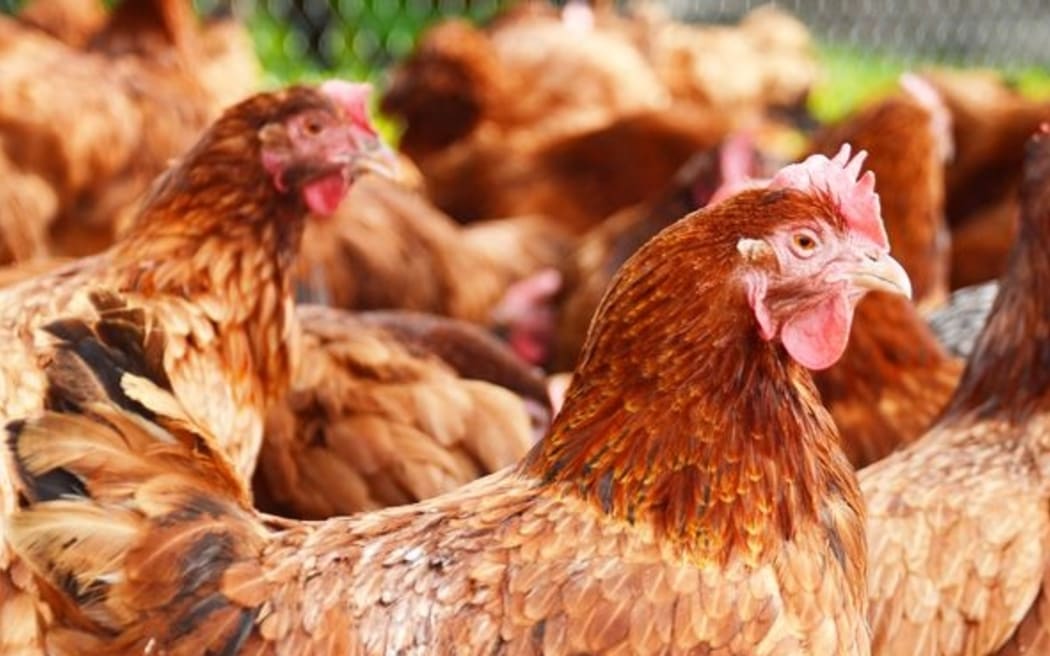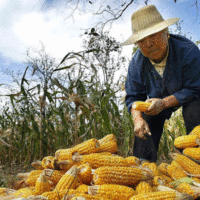In a concerning development, a 59-year-old resident of Mexico succumbed to bird flu in April, as reported by the World Health Organization (WHO). This marks the first confirmed human case of the A(H5N2) influenza virus globally and has raised questions about the potential risks and transmission routes of this avian virus. Despite the tragic outcome, the WHO has emphasized that the current risk to the general population remains low. This incident highlights the need for ongoing vigilance and understanding of bird flu, particularly as it pertains to public health.
Bird flu, or avian influenza, has historically posed significant threats to both poultry and humans, with certain strains proving more virulent than others. The recent case in Mexico serves as a stark reminder of the unpredictable nature of these viruses and the importance of monitoring and controlling their spread. By exploring the details of this case and examining the broader context of avian influenza, we can better understand the potential implications for public health and the measures needed to mitigate future risks.

The Recent Case in Mexico
The recent bird flu case in Mexico has garnered significant attention due to its unique characteristics and unfortunate outcome. The patient, a 59-year-old resident of the State of Mexico, developed severe symptoms including fever, shortness of breath, diarrhea, nausea, and general discomfort. Despite receiving medical care at a hospital in Mexico City, the individual passed away on April 24. The World Health Organization (WHO) confirmed that this was the first laboratory-confirmed human infection with the A(H5N2) virus globally, making it a notable incident in the ongoing monitoring of avian influenza viruses. What makes this case particularly intriguing is the unknown source of the infection. The patient had no known exposure to poultry or other animals typically associated with bird flu transmission. Additionally, the individual had multiple underlying health conditions, including chronic kidney disease and type 2 diabetes, and had been bedridden for three weeks prior to the onset of acute symptoms. These factors complicate the understanding of how the virus was contracted. Mexican authorities and the WHO have been investigating the case, but so far, there is no evidence of person-to-person transmission. Farms near the patient’s home were monitored, and individuals in contact with the patient tested negative for bird flu, further deepening the mystery surrounding this case. https://www.youtube.com/watch?v=15Bt0lwCb4Y&pp=ygU3V0hPIGNvbmZpcm1zIGZpcnN0IGZhdGFsIGh1bWFuIGNhc2Ugb2YgYmlyZCBmbHUgQShINU4yKQ%3D%3D
Understanding Bird Flu and Its Types
Bird flu, or avian influenza, is an infectious disease of birds caused by type A strains of the influenza virus. While many strains primarily infect birds, some have the potential to infect humans, leading to severe respiratory illness. The recent case in Mexico involves the A(H5N2) strain, which is relatively less known compared to other strains like H5N1 and H7N9.
Common Strains of Bird Flu
- H5N1: Known for its high mortality rate in humans, H5N1 has caused numerous outbreaks worldwide. It is highly pathogenic and can spread quickly among poultry, making it a significant concern for both animal and human health.
- H7N9: First reported in China, H7N9 is another strain that has caused severe illness in humans. Unlike H5N1, it has a lower mortality rate but is still a cause for concern due to its potential to mutate and adapt.
- H5N2: The strain involved in the recent Mexican case, H5N2, has been detected in poultry before but has not been widely known to infect humans. The infection in Mexico marks the first global case, raising questions about its transmission and pathogenicity.
Historical Context and Previous Outbreaks
Bird flu has a history of causing significant outbreaks among poultry and occasional spillovers into human populations. The most notable was the H5N1 outbreak in the early 2000s, which led to widespread culling of birds and heightened surveillance measures worldwide. These outbreaks highlight the importance of monitoring and controlling avian influenza to prevent large-scale pandemics. Understanding the different strains of bird flu and their potential impact is crucial for public health. Each strain poses unique challenges in terms of transmission, treatment, and prevention. As we continue to monitor these viruses, it becomes evident that ongoing research and vigilance are essential to mitigate the risks associated with avian influenza. https://www.youtube.com/watch?v=ySYb9hE4YO4&pp=ygUXYmlycmQgRmx1IGFuZCBJdHMgVHlwZXM%3D
Risk Factors and Vulnerabilities
The recent bird flu case in Mexico underscores the importance of understanding the risk factors and vulnerabilities that can increase the severity of influenza infections. While bird flu can potentially affect anyone, certain individuals are at a higher risk of developing severe illness due to preexisting health conditions and other factors.
Health Complications Increasing Vulnerability
The 59-year-old patient in Mexico had multiple underlying medical conditions that contributed to the severity of the bird flu infection. Chronic kidney disease and type 2 diabetes, both of which were present in the patient, are known to compromise the immune system, making it harder for the body to fight off infections. These conditions often lead to prolonged hospital stays and increased susceptibility to various illnesses, including influenza.
Risk Assessment by WHO
The World Health Organization (WHO) has assessed the current risk of bird flu to the general population as low. This assessment is based on the lack of evidence for person-to-person transmission in the recent Mexican case and the overall monitoring of bird flu outbreaks globally. However, individuals with chronic health conditions, the elderly, and those with weakened immune systems should remain vigilant and take additional precautions.
Vulnerability to Severe Influenza
- Chronic Health Conditions: Conditions such as diabetes, heart disease, and respiratory illnesses significantly increase the risk of severe complications from influenza infections, including bird flu.
- Age Factors: The elderly are more susceptible to severe influenza due to a naturally weaker immune system. Young children, especially those under five, are also at higher risk.
- Immunocompromised Individuals: Those with compromised immune systems, whether due to medical treatments like chemotherapy or conditions like HIV/AIDS, are particularly vulnerable to severe infections.
Understanding these risk factors is crucial for public health planning and individual precautions. It emphasizes the need for tailored health advice and preventive measures for vulnerable populations to reduce the impact of bird flu and other influenza viruses. By recognizing these vulnerabilities and taking proactive steps, we can better protect at-risk populations and mitigate the severity of influenza outbreaks. The recent case in Mexico serves as a reminder of the importance of awareness and preparedness in managing the risks associated with bird flu. 
Transmission and Precautionary Measures
Understanding how bird flu is transmitted and taking appropriate precautionary measures are essential steps in preventing the spread of the virus. While the recent case in Mexico did not identify a clear source of infection, it is important to be aware of common transmission routes and implement strategies to reduce risk.
Modes of Transmission
- Contact with Infected Birds: The primary mode of transmission for bird flu is direct or indirect contact with infected birds, including domestic poultry such as chickens and ducks. This can occur through handling, slaughtering, plucking, and preparing infected birds for consumption.
- Contaminated Environments: The virus can survive in bird droppings and other materials in the environment, making it possible to contract the virus by coming into contact with contaminated surfaces or materials.
- Airborne Particles: Although less common, bird flu viruses can be transmitted through inhalation of aerosolized particles from the respiratory secretions or droppings of infected birds.
- Human-to-Human Transmission: While rare, there have been instances where bird flu has spread from one person to another, typically in close contact situations. However, the recent case in Mexico did not show evidence of person-to-person transmission.
Preventative Measures
To reduce the risk of contracting bird flu, it is important to follow these precautionary measures:
- Avoid Contact with Birds: Limit exposure to wild birds and avoid direct contact with domestic poultry, especially in areas where bird flu outbreaks have been reported.
- Maintain Good Hygiene: Practice regular hand washing with soap and water, especially after handling birds or their droppings. Use hand sanitizers if soap and water are not available.
- Proper Cooking of Poultry: Ensure that all poultry and eggs are thoroughly cooked before consumption. The bird flu virus is killed by heat, so proper cooking is an effective way to prevent infection.
- Use Protective Gear: When handling birds or cleaning bird habitats, wear protective clothing such as gloves and masks to reduce the risk of exposure to the virus.
- Monitor for Symptoms: Be vigilant for symptoms of bird flu, which can include fever, cough, sore throat, muscle aches, and respiratory distress. Seek medical attention promptly if you experience any of these symptoms after potential exposure to the virus.
- Report Dead Birds: Report any instances of dead or sick birds to local health authorities. This helps in early detection and control of potential outbreaks.
Importance of Monitoring and Surveillance
Monitoring and surveillance of bird flu cases are crucial for early detection and control of outbreaks. Authorities should conduct regular inspections of poultry farms and markets, and implement biosecurity measures to prevent the spread of the virus. Public health organizations need to maintain vigilant surveillance systems to track and respond to new cases promptly. By understanding the transmission routes and adhering to preventive measures, individuals and communities can play a significant role in reducing the spread of bird flu. Awareness and proactive actions are key to safeguarding public health against this potentially serious virus.




